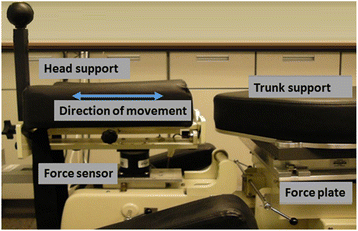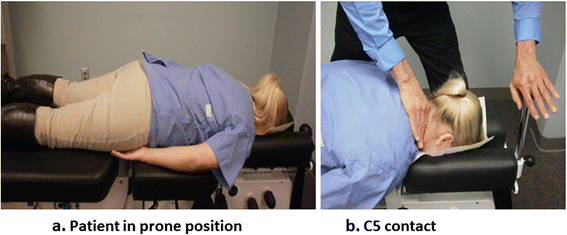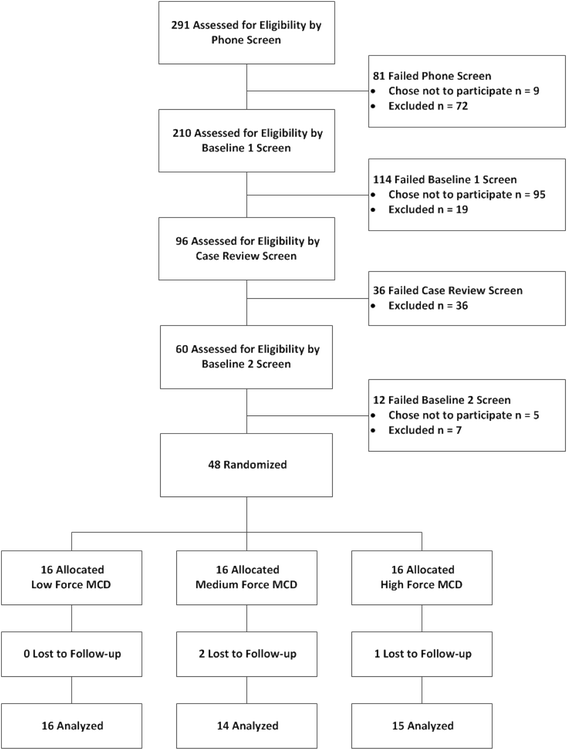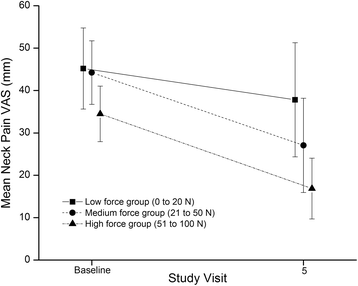Development of an attention-touch control for manual cervical distraction: a pilot randomized clinical trial for patients with neck pain
- PMID: 26044576
- PMCID: PMC4460764
- DOI: 10.1186/s13063-015-0770-6
Development of an attention-touch control for manual cervical distraction: a pilot randomized clinical trial for patients with neck pain
Abstract
Background: Manual cervical distraction (MCD) is a traction-based therapy performed with a manual contact over the cervical region producing repeating cycles while patients lie prone. This study evaluated a traction force-based minimal intervention for use as an attention-touch control in clinical trials of MCD for patients with chronic neck pain.
Methods: We conducted a mixed-methods, pilot randomized clinical trial in adults with chronic neck pain. Participants were allocated to three traction force ranges of MCD: low force/minimal intervention (0-20 N), medium force (21-50 N), or high force (51-100 N). Clinicians delivered five treatments over two weeks consisting of three sets of five cycles of MCD at the C5 vertebra and occiput. Traction forces were measured at each treatment. Patient-reported outcomes included a pain visual analogue scale (VAS), Neck Disability Index (NDI), Credibility and Expectancy Questionnaire (CEQ), and adverse effects. A qualitative interview evaluated treatment group allocation perceptions.
Results: We randomized 48 participants, allocating an average of five each month. Forty-five participants completed the trial with three participants lost to follow-up. Most participants were women (65%) and white (92%) with a mean (SD) age of 46.8 (12.5) years. Mean traction force values were within the prescribed force ranges for each group at the C5 and occiput levels. Neck pain VAS demonstrated a benefit for high traction force MCD compared to the low force group [adjusted mean difference 15.6; 95% confidence interval (CI) 1.6 to 29.7]. Participants in the medium traction force group demonstrated improvements in NDI compared to the low force group (adjusted mean difference 3.0; 95% CI 0.1 to 5.9), as did participants in the high traction force group (adjusted mean difference 2.7; 95% CI -0.1 to 5.6). CEQ favored the high force group. Most low force participants correctly identified their treatment allocation in the qualitative interview. No serious adverse events were documented.
Conclusions: This pilot study demonstrated the feasibility of a clinical trial protocol and the utility of a traction-based, minimal intervention as an attention-touch control for future efficacy trials of MCD for patients with neck pain.
Trial registration: ClinicalTrials.gov NCT01765751 (Registration Date 30 May 2012).
Figures





References
-
- Carroll LJ, Hogg-Johnson S, Velde G, Haldeman S, Holm LW, Carragee EJ, et al. Course and prognostic factors for neck pain in the general population: results of the Bone and Joint Decade 2000-2010 Task Force on Neck Pain and Its Associated Disorders. Spine. 2008;33:S75–82. doi: 10.1097/BRS.0b013e31816445be. - DOI - PubMed
-
- O’Neill KR, Wilson RJ, Burns KM, Mioton LM, Wright BT, Adogwa O, McGirt MJ, Devin CJ: Anterior cervical discectomy and fusion for adjacent-segment disease: clinical outcomes and cost-utility of surgical intervention. J Spinal Disord Tech 2013, Epub. - PubMed
-
- Hogg-Johnson S, van der Velde, Carroll LJ, Holm LW, Cassidy JD, Guzman J, et al. The burden and determinants of neck pain in the general population: results of the Bone and Joint Decade 2000-2010 Task Force on Neck Pain and Its Associated Disorders. J Manipulative Physiol Ther. 2009;32(Suppl 2):S46–60. doi: 10.1016/j.jmpt.2008.11.010. - DOI - PubMed
Publication types
MeSH terms
Associated data
Grants and funding
LinkOut - more resources
Full Text Sources
Other Literature Sources
Medical
Miscellaneous

